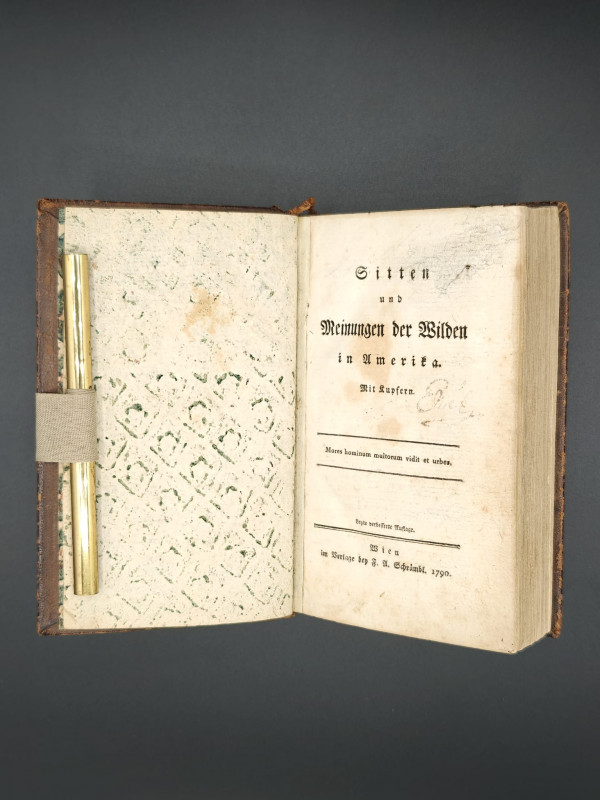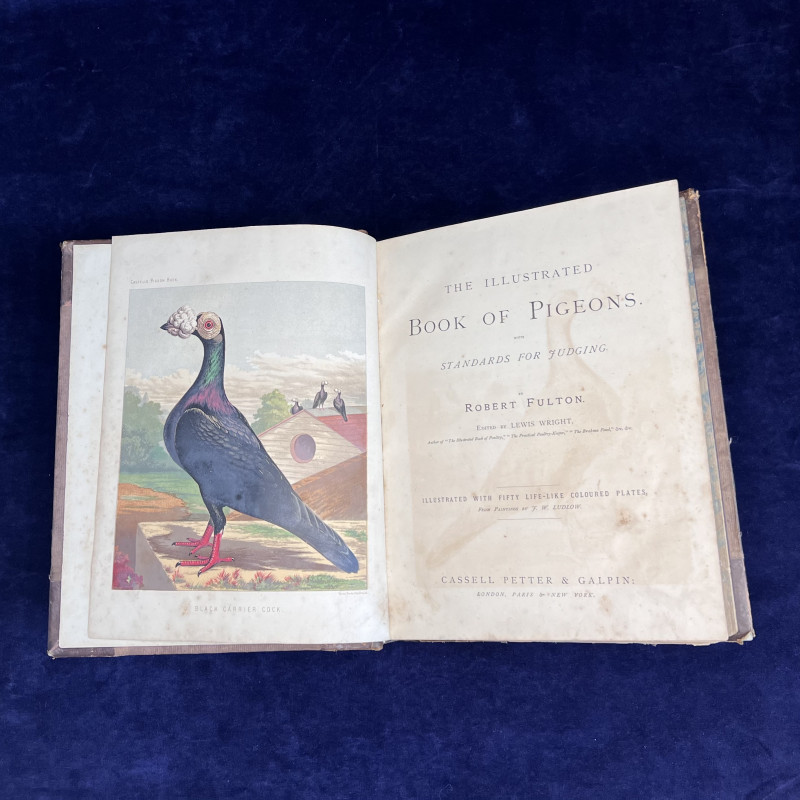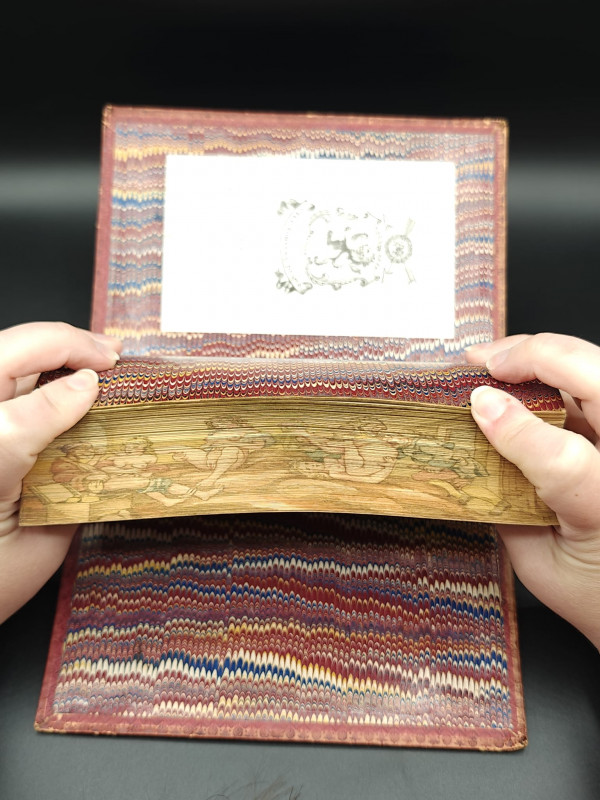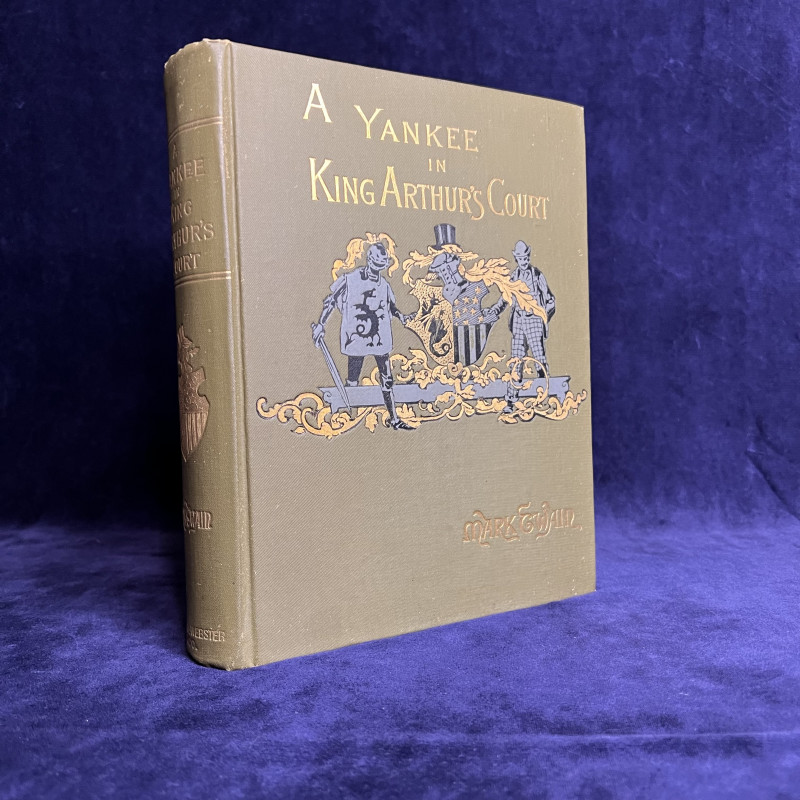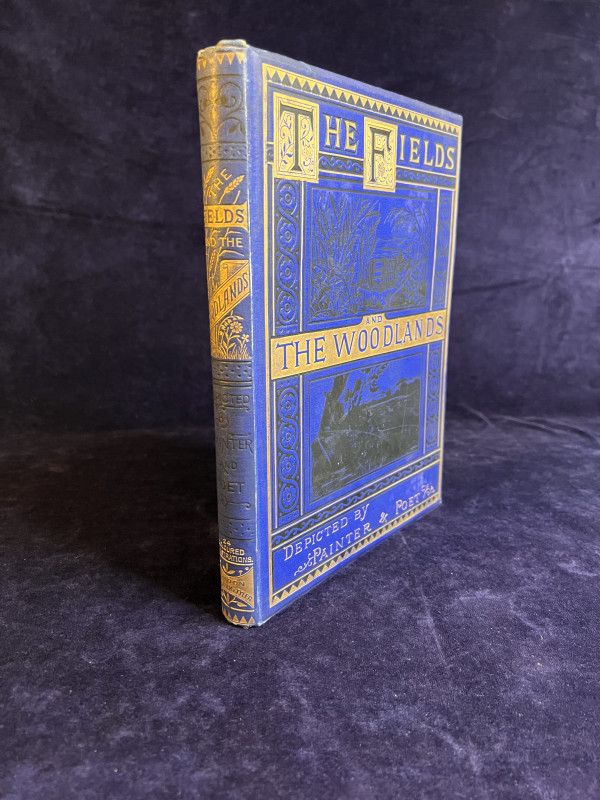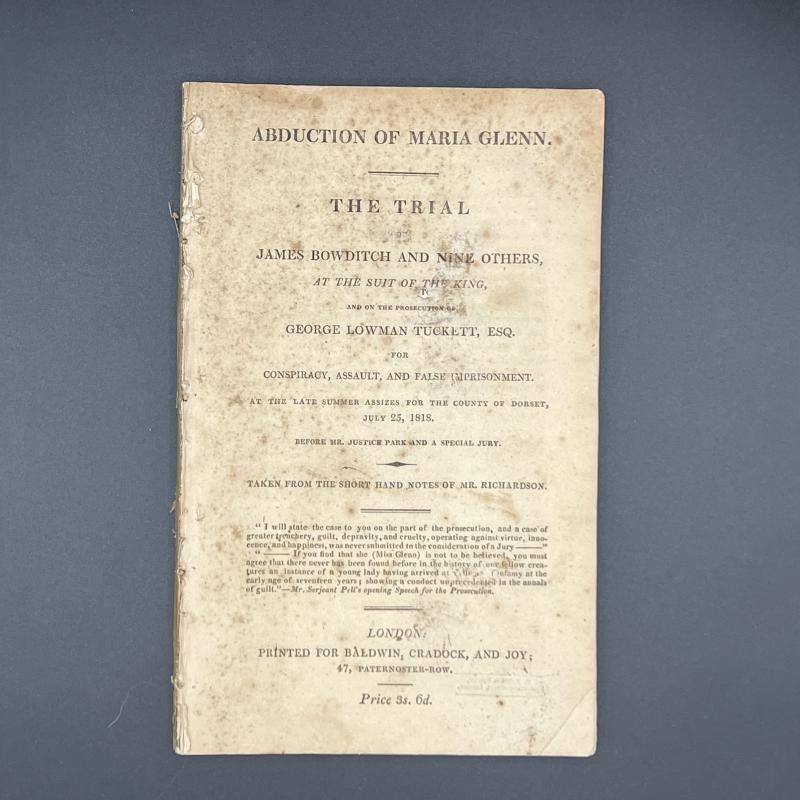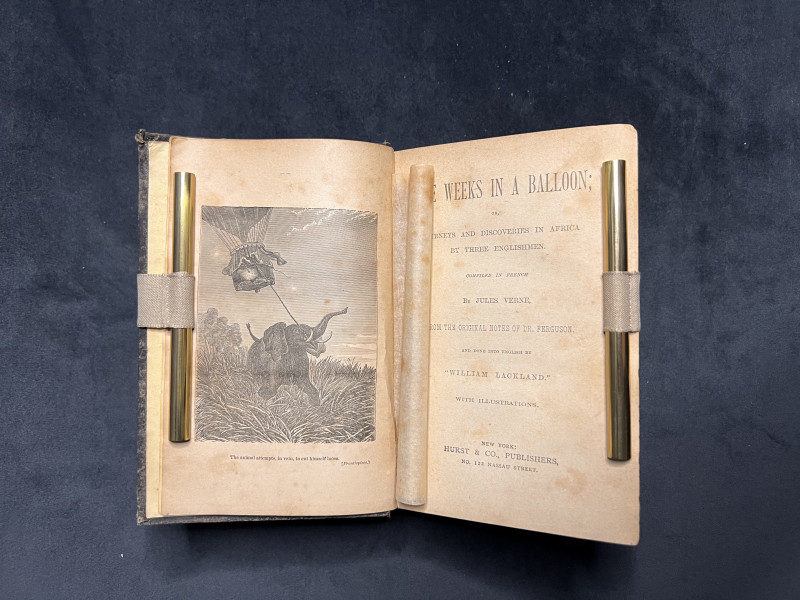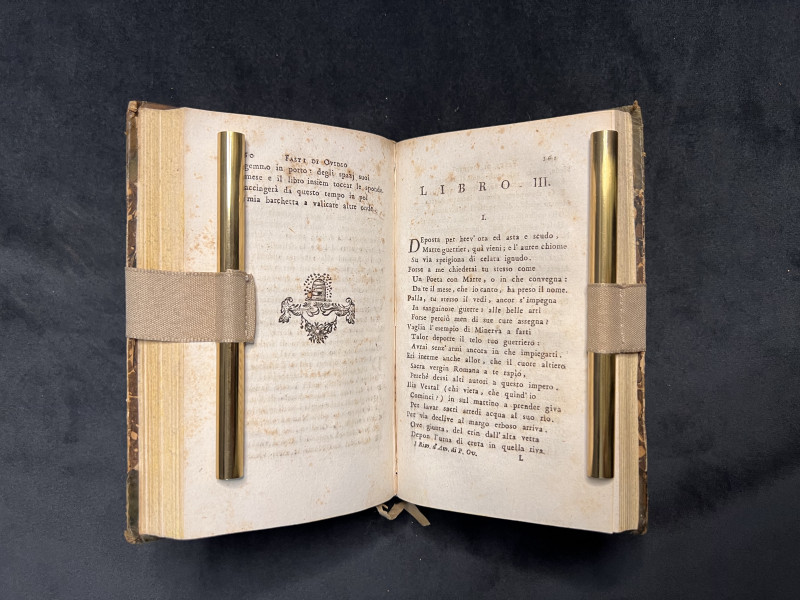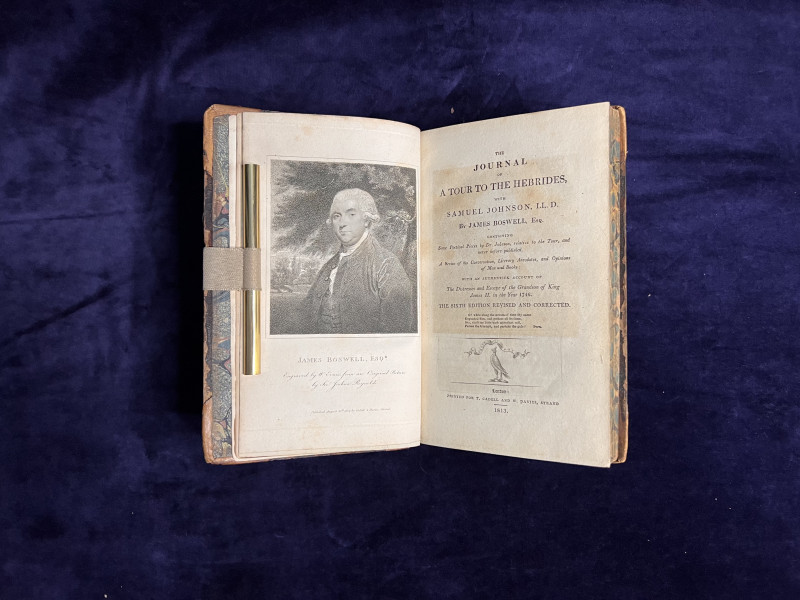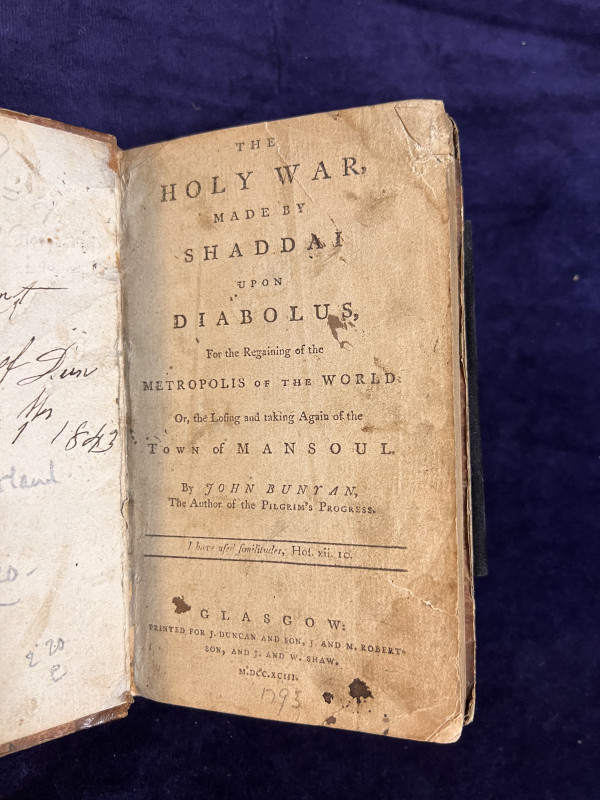Sitten und meinungen der wilden in Amerika.
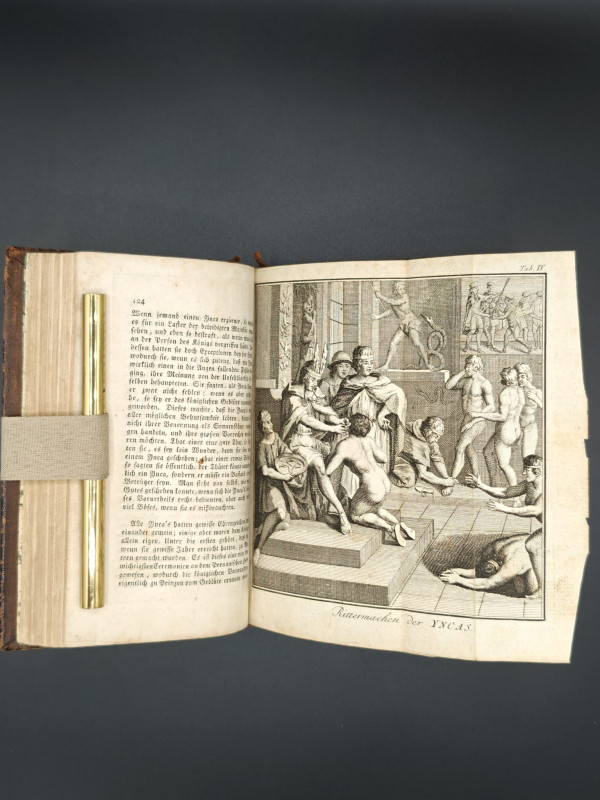


Book Description
Purmann, Johann Georg. Sitten und meinungen der wilden in Amerika. Mit kupfern . Letzte verbesserte auflage. Wien [Vienna]: in Verlag bey F. A. Schrämbl, 1790.
(165 x 105 mm) pp. vi, [Table], 1-391, π4, A-Z8, Aa8, Bb4. Text complete; 10 illustrations in good condition, lacks second copper illustration for p. 371 and extant copper illustration for p. 371 wants part of the image. Bound in full calf with gilt stamped decorations of the time along spine. Top end band chipped and edges bumped. Spine is strong. Fly leaves and pastedown in paste-paper.
Sitten und Meinungen der Wilden in Amerika (1790) by Johann Georg Purmann is an Enlightenment-era ethnographic work that compiles and comments on European accounts of Indigenous peoples in the Americas, including their religious beliefs, customs, and societal organization. Though its perspective is dated and often filtered through colonial and missionary interpretations, it provides a snapshot of how Europeans understood (or misunderstood) Indigenous cultures in the late 18th century.
General Description of Peoples of the New World
Purmann attempts to generalize Indigenous societies across the Americas, often describing them as “noble savages” in line with Rousseauian ideals. He emphasizes:
Religious Systems: Indigenous religions are portrayed as deeply symbolic and animistic, often revolving around nature worship. The author compares these belief systems to those of the ancient Greeks, noting a similarity in mythological frameworks and polytheism
Social Structures: He discusses how certain peoples, like the Peruvians under the Inca, had highly organized societies with centralized authority and agricultural systems. The Incas, for example, are portrayed as systematically relocating populations for economic and political control
Burial and Afterlife Beliefs: Many groups believed in an afterlife and buried the dead with items needed in the next world. Some even feared being haunted if items were forgotten
Specific Focus on Florida and the Apalachee
The book contains a section specifically about Florida, particularly the Apalachee people:
Religion: The Apalachee worshipped the sun and maintained temples in which priests offered sacrifices. Other Floridian tribes are said to have venerated the sun as well, but often with less ritual structure—offering gifts or sacrifices casually rather than in organized ceremonies
Religious Practices and Symbolism: Some Florida groups, perhaps misunderstood or misrepresented, were thought to have turned anything that impressed them—natural wonders or remarkable objects—into objects of worship. This was interpreted as a form of idolatry by the author and his sources
Societal Observation: Floridian societies are described as varied, with some showing greater social organization and craftsmanship than expected by European explorers. Others lived more nomadically or in swampy environments, relying heavily on fishing and wild resources
Cautions on Interpretation
Purmann repeatedly warns that European accounts were often shaped by ignorance of Indigenous languages and customs. He criticizes early missionaries and explorers for jumping to conclusions about religion and culture without sufficient understanding
Author
Purmann, Johann Georg
Date
1790
Binding
Full Calf
Publisher
Wien [Vienna]: in Verlag bey F. A. Schrämbl
Condition
Good
Pages
391
Friends of the PBFA
For £10 get free entry to our fairs, updates from the PBFA and more.
Please email info@pbfa.org for more information
